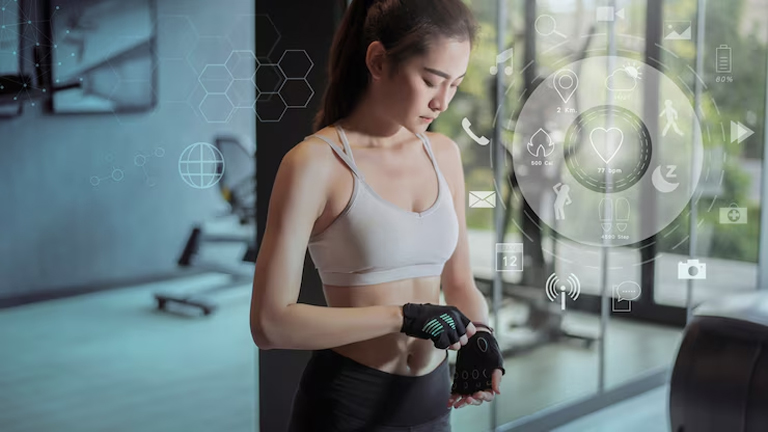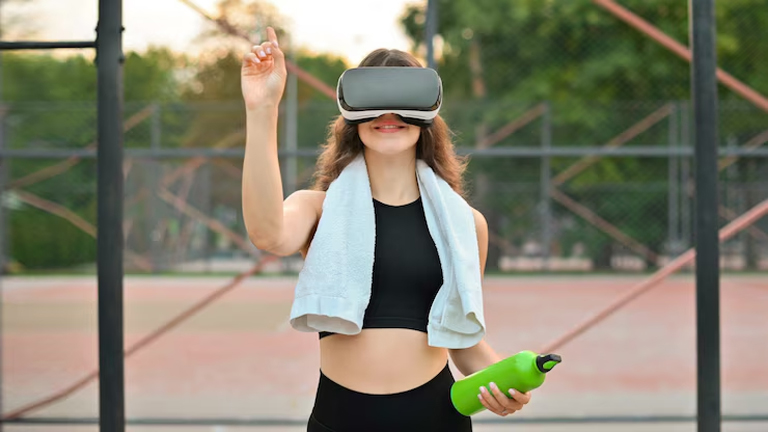The fitness industry is undergoing a massive transformation, thanks to AI-powered personalized fitness. Gone are the days of generic workout plans—today, artificial intelligence is revolutionizing how we exercise by delivering customized routines tailored to individual needs. Whether you’re a beginner or an elite athlete, AI-driven fitness solutions optimize performance, track progress, and adapt in real-time for maximum results.
In this article, we’ll explore how AI is shaping personalized fitness, the benefits it offers, and the top AI-powered fitness tools available today.
What is AI-Powered Personalized Fitness?
AI-powered personalized fitness leverages machine learning algorithms, wearable tech, and data analytics to create workout plans that adapt to an individual’s goals, fitness level, and preferences. By analyzing data such as heart rate, sleep patterns, nutrition, and exercise history, AI provides real-time feedback and adjusts workouts for optimal efficiency.
How Does AI Personalize Fitness?
- Data Collection – Wearables and fitness apps track metrics like steps, calories burned, and muscle engagement.
- Machine Learning Analysis – AI processes this data to identify patterns and suggest improvements.
- Dynamic Adjustments – Workouts evolve based on performance, preventing plateaus and reducing injury risks.
- Behavioral Insights – AI detects motivation levels and recommends exercises that keep users engaged.
Benefits of AI-Powered Personalized Fitness
1. Customized Workout Plans for Individual Needs
Unlike generic fitness programs, AI tailors workouts based on:
- Fitness goals (weight loss, muscle gain, endurance)
- Body type and metabolism
- Previous injuries or limitations
2. Real-Time Feedback & Corrections
AI-powered fitness apps use computer vision (like in smart mirrors) to analyze form and prevent injuries. For example:
- Posture adjustments during squats or deadlifts
- Rep counting and tempo suggestions for better efficiency
3. Adaptive Training for Continuous Progress
AI detects when your body adapts to a routine and modifies workouts to prevent plateaus, ensuring continuous improvement.
4. Enhanced Motivation & Accountability
- AI chatbots provide encouragement and reminders.
- Gamification elements (badges, challenges) keep users engaged.
5. Integration with Nutrition & Recovery
Many AI fitness platforms sync with nutrition trackers and sleep monitors, offering a holistic health approach.
AI-Powered Personalized Fitness: Key Features & Benefits
| Feature | How AI Enhances It | Example Tools | User Benefit |
| Custom Workout Plans | Analyzes fitness level, goals, and progress to generate tailored routines. | Freeletics, Fitbod | Saves time with optimized workouts. |
| Real-Time Form Feedback | Uses computer vision (3D sensors/cameras) to correct posture and prevent injuries. | Tempo, Mirror | Reduces injury risk and improves effectiveness. |
| Adaptive Training | Adjusts workout difficulty based on performance data to avoid plateaus. | Future, Whoop | Ensures continuous progress. |
| Nutrition & Recovery | Syncs with health data (sleep, diet) for holistic fitness plans. | MyFitnessPal, Whoop | Optimizes overall health, not just exercise. |
| Motivation & Gamification | AI chatbots and challenges keep users engaged. | Peloton, Zwift | Boosts consistency and long-term adherence. |
| Predictive Analytics | Forecasts performance peaks and injury risks using historical data. | WHOOP, Apple Watch | Proactive health management. |
Future Trends in AI Fitness
| Trend | Potential Impact | Expected By |
| VR/AR Workouts | Immersive AI-generated training environments. | 2025-2026 |
| DNA-Based Fitness | Hyper-personalized plans using genetic data. | 2026+ |
| AI Physical Therapists | Rehab programs tailored to injury recovery. | 2025+ |
Top AI-Powered Fitness Tools in 2024
1. Freeletics – AI-Driven Coaching App
- Uses machine learning to adjust workouts based on user feedback.
- Ideal for HIIT, strength training, and bodyweight exercises.
2. Tempo – Smart Home Gym with 3D Motion Tracking
- AI analyzes movements via 3D sensors and provides instant corrections.
- Best for strength training and functional fitness.
3. Fitbod – Personalized Weight Training App
- Creates custom weightlifting plans based on available equipment and recovery data.
4. Whoop – AI-Powered Recovery & Performance Tracker
- Focuses on strain, recovery, and sleep optimization for athletes.
5. Mirror – Interactive AI Fitness Display
- Live and on-demand workouts with real-time AI feedback.
The Future of AI in Fitness
The next wave of AI-powered fitness includes:
- Virtual reality (VR) workouts with AI-generated environments.
- Predictive injury prevention using biomechanical analysis.
- DNA-based fitness plans integrating genetic data for hyper-personalization.
Conclusion
AI-powered personalized fitness is no longer a futuristic concept—it’s here, transforming how we train. By leveraging AI-driven insights, adaptive workouts, and real-time feedback, individuals can achieve their fitness goals faster and more efficiently than ever before.
Are you ready to embrace the future of fitness? Try an AI-powered fitness app or device today and experience the difference!
Final Thoughts
- AI makes fitness more accessible, effective, and engaging.
- The combination of wearables, machine learning, and personalized coaching is revolutionizing health.
- Stay ahead of the curve by integrating AI-powered fitness solutions into your routine.
By optimizing workouts with AI, you’re not just following a trend—you’re investing in a smarter, data-driven approach to lifelong fitness.
Would you like recommendations for the best AI fitness tools for your goals? Let us know in the comments!


